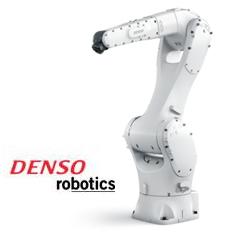Unmanned Systems Europe Wraps With Regulations, Public Perception
In an afternoon panel on public perception, Michael Standar, chief of strategies and external relations for the SESAR Joint Undertaking, said if the industry treats air traffic management as a straining factor, then public perception issues will follow, and the longer the industry waits to integrate, the worse it will get.
The second day of AUVSI's Unmanned Systems Europe discussed the pragmatic approach to unmanned aircraft integration in Europe, including the path forward from a regulatory and public perception perspective.
Frank Brenner, director general of EUROCONTROL, compared fitting unmanned aircraft into an already busy European airspace to putting together a jigsaw puzzle - there are so many pieces that it's difficult to know where to begin or end.
"I'm not saying all of this to depress you," he said. " … And I'm not trying to claim it's all too difficult either. … I think you are all here in the right business at the right moment in time, because it's a big business ahead."
He said the timeline for integration was tight and a holistic approach will be key to getting it right. The second part of this conundrum is public perception, he said, despite unmanned aircraft's many uses outside of the military.
"I doubt whether the public would pick up on these applications if you walked out of the hotel and onto the street," he said.
He added that politicians are often swayed by public perception, noting how the German public has seen the death of the Euro Hawk program because "a politician wasn't able to answer questions." And Brenner said politicians often walk away from an issue when they feel they cannot win the argument.
Peter Lee, a commercial and technology lawyer for Taylor Vinters LLP, said that because unmanned aircraft can be used in so many different ways, they are at higher risk for attracting bad publicity.
"The next time we get a topless picture of Kate Middleton and it was taken by an unmanned platform, then that will do nothing to help our cause and perception in this area," he said.
In an afternoon panel on public perception, Michael Standar, chief of strategies and external relations for the SESAR Joint Undertaking, said if the industry treats air traffic management as a straining factor, then public perception issues will follow, and the longer the industry waits to integrate, the worse it will get.
Standar also said Europe doesn't have the appetite for test sites, the way the U.S. Federal Aviation Administration has fashioned the next step of integration. He said that avoids the issue of using desegregated airspace. He added there will be nine offers signed within the next few weeks in Europe for areas for blended manned and unmanned airspace flights.
Dr. Elmar Giemulla, speaking on behalf of the German association UAV DACH, highlighted Germany's take on airspace, which was opened in the beginning of 2012 to anyone not operating commercially. The country has two methods to be permitted to operate, long-term permits that last two years and short-term permits for single use. The permitting authority is not Germany's national air traffic regulator but is regulated by the country's 16 states interpreting the law. In the first year of these operations, Germany had 252 permissions granted for flight.
Giemulla said it's difficult to get standards for the industry without permitting the industry to fly so they can learn from different experiences.
"It's kind of a pendulum," he said. " … It's not a one-way road."
Chris Day, head of capability engineering at Schiebel who was formerly in the regulatory business, said he's less convinced today that standards won't impose added cost for industry, a huge concern for him.
"It's all about numbers. Unless you can make the numbers work there won't be an industry. Simple as that," he said.
Featured Product

Denso Robotics - Newest 6-axis VMB Series offers longer arm reach and higher load capacity
The new VMB series represent some of the newest members to our 6-axis family of robots. These high-performance, versatile units offer a longer arm reach and a higher load capacity than traditional models which make VMB an excellent solution for palletizing, packaging, and material handling. New features include greater air piping, valve and signal line options, as well as new programming options with state-of-the-art functions using our new WINCAPS Plus software. VMB offers an IP67 protection grade along with meeting ISO Class 5, which makes them suitable for electric parts, food manufacturing processes, and pharmaceutical and medical devices. With the addition of the new VMB large robots, all manufacturing processes can now be automated by DENSO Robotics.
